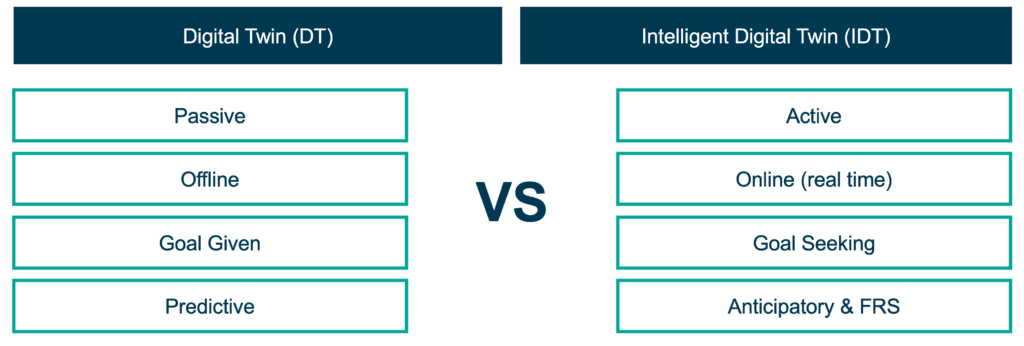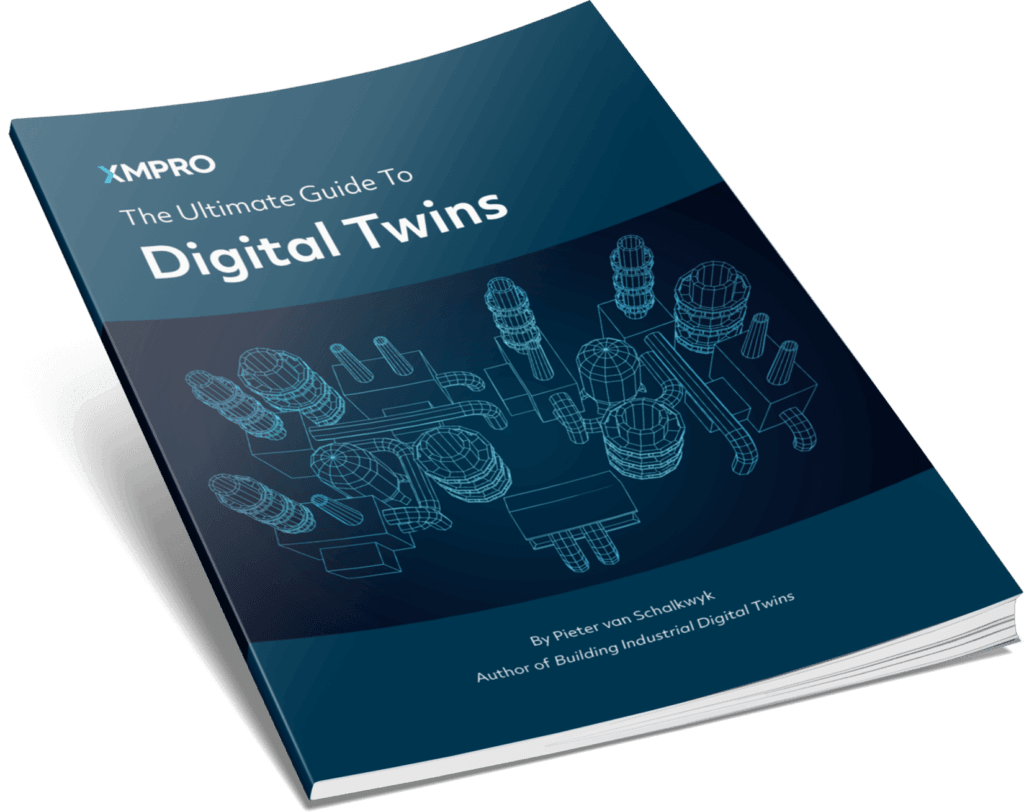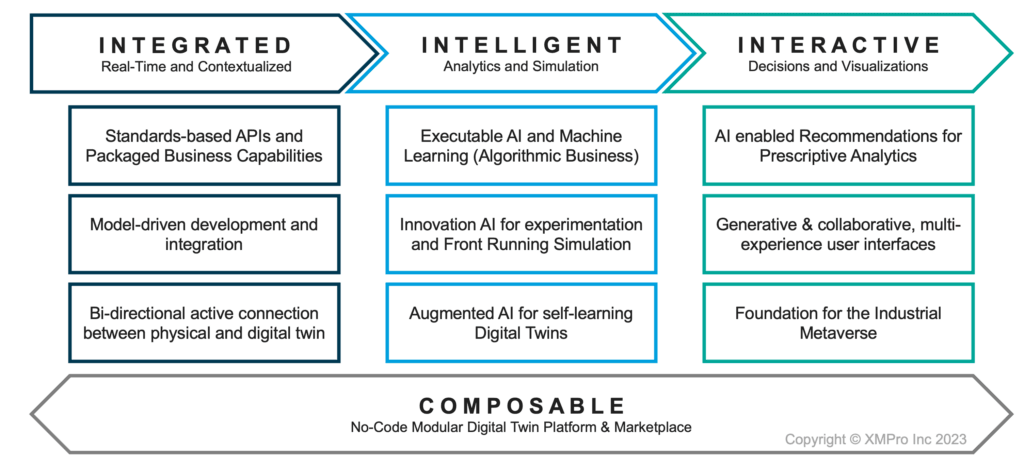The Roadmap to Intelligent Digital Twins
Starting on the journey towards Intelligent Digital Twins (IDTs) has become a reality for industry leaders and innovators worldwide, as the democratization of AI has made advanced technologies such as ChatGPT readily accessible to engineers and subject matter experts. This shift empowers professionals across various domains to harness the power of AI, accelerating the adoption and implementation of IDTs in diverse industries.
In this blog, I will explore what Intelligent Digital Twins are and how they differ from traditional Digital Twins.
The most significant benefit of an Intelligent Digital Twin (IDT) is its ability to actively and continuously augment human decision-making processes. By being active, online, goal-seeking, and anticipatory, IDTs can provide real-time insights and predictions to improve operational efficiency, optimize processes, and minimize the use of physical resources. This ultimately leads to better, data-driven decision-making, reduced costs, and enhanced overall performance throughout the entire product lifecycle.
Dr Michael Grieves (regarded as the father of Digital Twins) provides the roadmap toward Intelligent Digital Twins in his 2022 article [i] “Intelligent digital twins and the development and management of complex systems”.

Figure 1 – Evolution of Digital Twin: Dr M. Grieves 2022 Digital Twin Consortium Member Meeting, Orlando, Florida
The Intelligent Digital Twin (IDT) is an advanced version of the traditional digital twin, which has been largely passive in nature. IDTs are characterized by their active, online, goal-seeking, and anticipatory nature. They are designed to assist and augment human intelligence, rather than replace it.

Figure 2 – Traditional Digital Twins versus Intelligent Digital Twins
Here is my summary of Dr. Grieves’ description of Intelligent Digital Twins:
Active vs Passive: As active entities, IDTs are constantly scanning their physical counterparts and their environments, evolving from passive repositories to proactive, always-online agents. Traditional digital twins are passive repositories of product information, where users search for the information they need. In contrast, Intelligent Digital Twins (IDTs) are active, assisting and providing information as needed to augment human intelligence, not replace it.
Offline vs Online: Traditional digital twins communicate with their physical counterparts and environments in an offline, passive manner, waiting for the physical system to initiate an action. IDTs, however, are online, actively scanning their physical twins and environments. The digital twin evolves from a passive repository to a proactive, constantly online agent.
Goal-given vs Goal-seeking: The goal-seeking aspect of IDTs is shared between them and their human users, with goals defined throughout the different phases of a product’s lifecycle. IDTs aim to assist humans in reaching these goals, while focusing on minimizing resource usage. Additionally, IDTs are anticipatory in nature, running continuous simulations to model and predict future events, helping to prevent human biases from tainting decision-making processes. In the traditional digital twin model, humans provide all the goal-seeking. With IDTs, goal-seeking is shared between the digital twin and its human users, with goals defined throughout the product lifecycle. The intent is to assist and augment humans in reaching their goals, not to change the goals themselves.
Predictive vs Anticipatory: Traditional digital twins do not anticipate future events or adjust actions to meet future goals. IDTs, however, are anticipatory, constantly running simulations of the product’s performance and predicting future adverse events. This allows IDTs to provide valuable assistance to humans by preventing biases from tainting decision-making processes and running complex calculations to model and simulate physical events.
Front Running Simulation (FRS) is an example of the anticipatory capabilities of IDTs, which uses the digital twin of complex products to run constant simulations. FRS relies on the digital twin’s ability to manipulate time (by simulating faster than real-time) and predict adverse events, allowing humans to assess risk. By processing all available data and information in an accurate and unbiased manner, IDTs can help humans explore a wide variety of scenarios, calculate probabilities, and provide estimates of outcomes based on current conditions and actions.
An Example of Front Running Simulations in Formula 1
Formula 1 (F1) teams utilize Front Running Simulations (FRS) with digital twins of cars and tracks combined with real-time telemetry data to optimize race planning and gain a competitive edge. This advanced technology helps teams make strategic decisions during races, including tire choices, pit stops, and energy management.
McLaren, for example, uses a digital twin of their F1 car to gain real-time data insights and make faster decisions during races. The digital twin can process over 100 GB of data per race. (Digital Twin: Advancing Real-time Data Insights in F1 Racing and Beyond (brighttalk.com))
The process begins by creating highly detailed digital twins of both the cars and tracks. These digital twins are accurate representations of the physical components, taking into account factors such as aerodynamics, suspension setup, powertrain, and tire behavior. Additionally, digital twins of tracks capture the specific characteristics of each circuit, such as elevation changes, corner types, and track surfaces.
During the race, real-time telemetry data is collected from the car’s sensors, including information on tire wear, fuel consumption, brake temperatures, and more. This data is combined with the digital twin models, as well as other factors like weather conditions, to create accurate simulations of the race.
FRS then use these digital twins and telemetry data to create “faster than real-time” scenarios. These simulations run continuously, anticipating the car’s performance and the evolving race conditions. This predictive approach allows teams to evaluate various strategies and assess their potential impact on the race outcome. These simulations can run multiple scenarios, such as different pit stop strategies, tire choices, or energy management tactics, enabling teams to make informed decisions on the fly.
By using FRS with digital twins and real-time telemetry data, F1 teams can optimize their race planning and react quickly to changing conditions. This advanced technology ultimately helps teams improve their chances of success on the track and adapt to unforeseen circumstances during the race.
Just imagine what FRS can mean for your business in the same way it changed Formula 1 racing.
Embracing this vision of Intelligent Digital Twins, XMPro has developed a comprehensive framework that transforms this concept into a tangible and actionable implementation plan. In our next blog post we will introduce our I3C Digital Twin Strategy Framework, designed to guide organizations through the process of adopting and integrating Intelligent Digital Twins seamlessly and effectively. (Link to blog post 2)
[1] https://digitaltwin1.org/articles/2-8
















